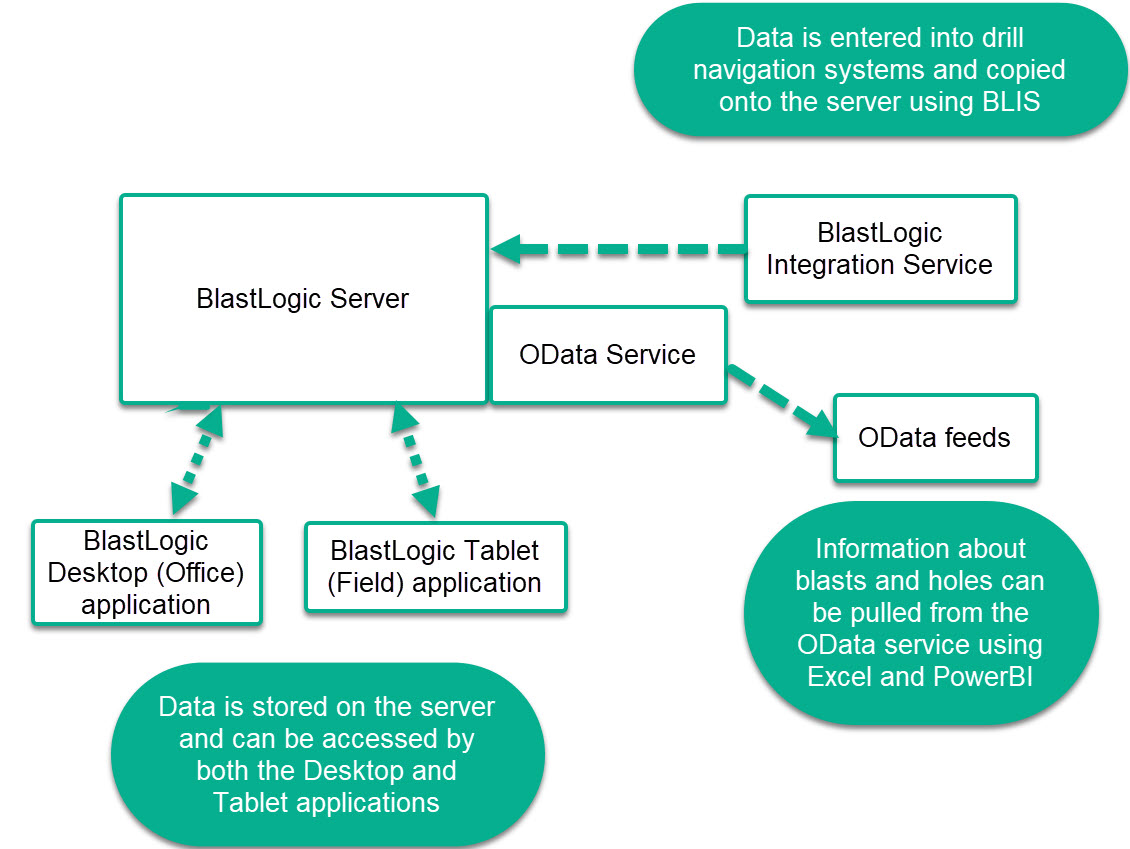Managing Data
BlastLogic consists of a desktop application, a tablet application and a server. Data is stored on the server and accessed via the desktop (office) and tablet (field) applications. BlastLogic also contains two web services which are used to interact with the server: the OData service and the BlastLogic Integration Service (BLIS). OData is a component of the server, while BLIS is a separate application which is used to import drilling events into BlastLogic.

Desktop
The desktop application is used to import, prepare, analyse and visualise data. Data is published on the server so that it can be accessed on the tablet application or using the OData service via the creation of collections of holes known as sheets.
Tablet
The tablet application is designed to be used out on the field for the purpose of data entry. The tablet has five modules: Dipping, Backfilling, Charging, Observations and Inventory. If custom hole properties are flagged as editable on the desktop application, they can be modified out on the field, saved and stored onto the server.
Server
The server acts as a single source of truth. Once a server address is configured, multiple sites can be added to it and data can be published on a per site basis. Being able to store data on the server allows the desktop and tablet applications to access the same data stored on a particular site.
OData Service
The OData Service enables users to get access to BlastLogic data via third party clients. There are two types of OData feeds where data is stored: live feeds and synchronised feeds. Live feeds are updated immediately while synchronised feeds are updated at a configurable interval.
BlastLogic Integration Service
BLIS is a web service used to push drill data to the server. The website provides the configuration tools to link databases to specific sites that are located at a defined server address. Through BLIS, drilling event related activity can be monitored and user access can be controlled through the creation of admins and guests.
